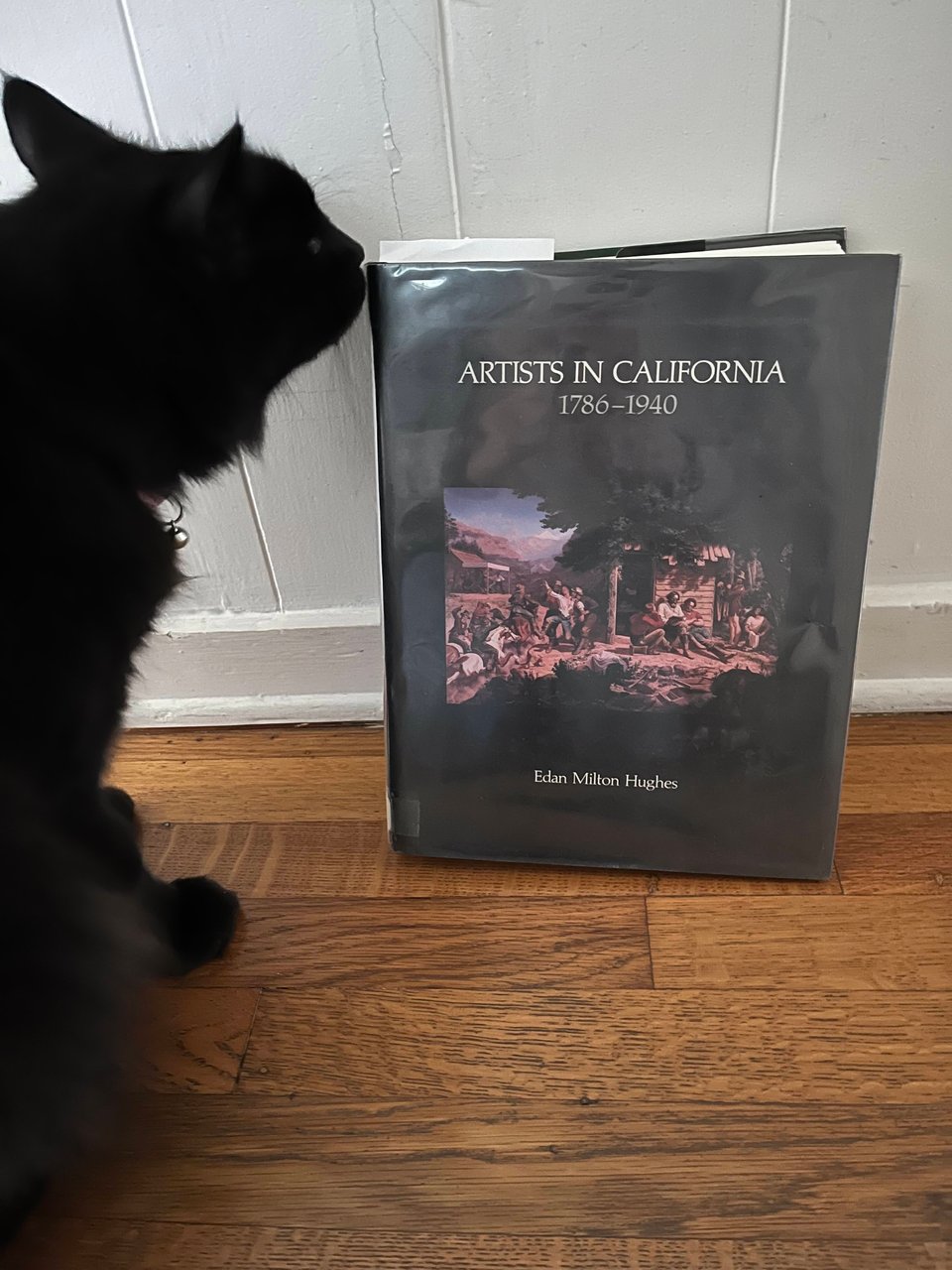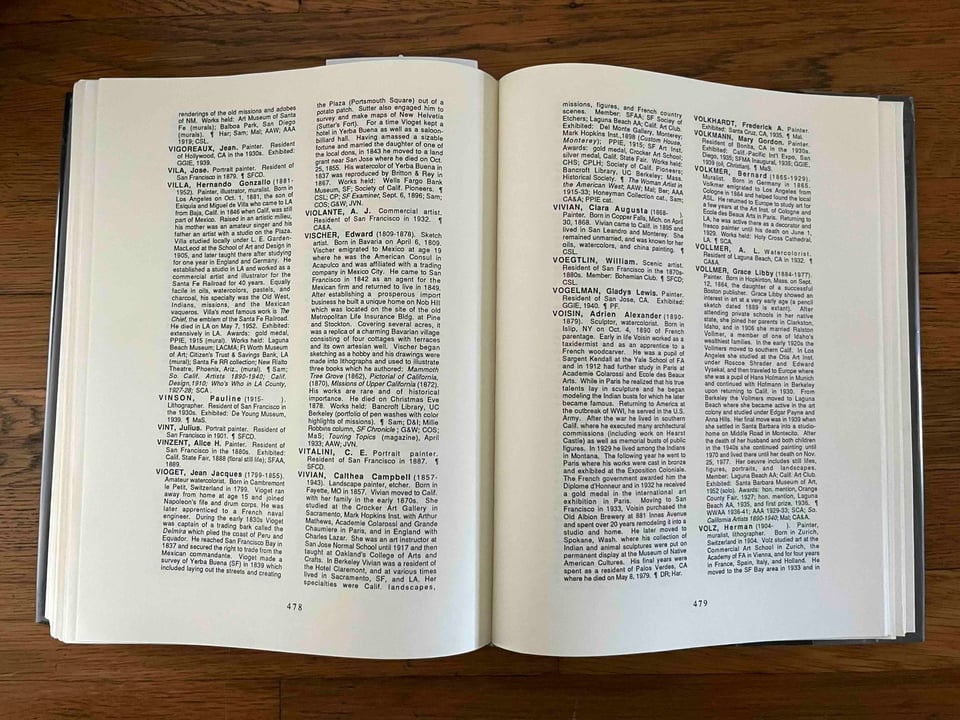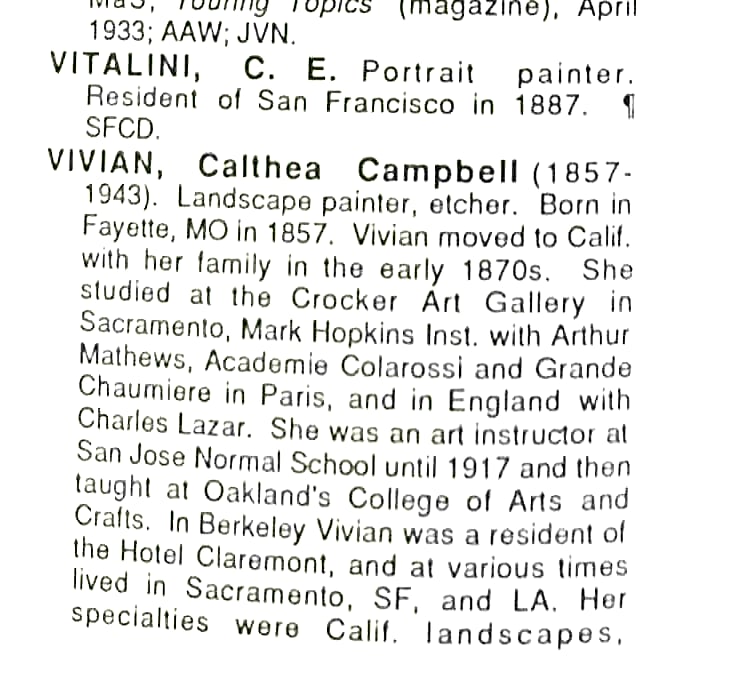ARTchivist's Notebook: Old Reference Resources Never Die

Old reference books never die…they just get moved to the circulating collection.
I’m currently researching an article about a Japanese American artist from Idaho who spent his early years in California and studied at the California School of Arts and Crafts (now California College of the Arts) in 1930-31. I received a copy of his transcript from the school archives along with a list of teacher bios (shout out to the CCA archivists!). But there was one teacher I wasn’t able to find any information on and I only had their last name, “Vivian.” They were his watercolor teacher, and watercolor was his main medium.
After several failed internet searches, I stumbled across the name of a book, Artists in California: 1786-1940 by Edan Milton Hughes. Thinking it was a catalog from an exhibition somewhere, I was delighted to find they had it at my local library. I was doubly delighted to find that it is not a catalog but an old-school “encyclopedia” of artists, covering 6,600 artists active in the state within the time period. Here’s what it looks like inside:

And here is the entry for my “Vivian:”

I was triply pleased to learn she was a woman!
This resource was compiled by one man over a period of 25 years without any institutional affiliations and for no other reason than he wanted to do it. I worked with books like this at the Motion Picture Academy Library and at Walt Disney Animation Research Library — sometimes they are the only indication that a film existed, or they’re the only authoritative source for film credits (which are very important for creating authority records for people who aren’t documented in any other way). This book is an authority database in its own right and I am now mulling over what I can do with it. My first thought was to find all the Japanese American names just to see how many there were. What other new research projects could it inspire?
At the same time, and by the author’s admission, it is an incomplete and partial resource. It is also an opportunity to reflect on all the artists who aren’t recorded, and what is our definition of an artist anyway? Hughes admits he did not include “photographers, craftsmen, and architects,” although he did include illustrators, commercial artists, engravers, etchers, lithographers, and woodcarvers among the painters, sculptors, muralists, pastelists (surely a neologism!), and teachers. And of course the resource says nothing of the many Indigenous artists who have been active in the region since way before it was called “California.” I’m sure there were many others whose work did not circulate in areas and communities deemed sufficiently “artistic.” Every record whose survival we celebrate is also an occasion to mourn the people, places, and things it does not mention.
My first keynote!
I'll be giving my first keynote address at the Getty's International Terminology Working Group on Wednesday, October 23, at 10:30 am PT. This gathering is organized by the folks who bring you the Getty Vocabularies, and will be attended by museum catalogers from all over the world. I’ll talk about the role controlled vocabularies can play in inclusive description. Am I nervous? Yes I am! The talk will be live-streamed online, but you need to register in advance and virtual seats are limited. It would be nice to know there are some old friends in the audience and I hope to “see” you there!
Curationist Metadata Summit 2024
The recording from the 2024 Curationist Metadata Summit is now online. If you missed our conversation with a panel of Wiki experts about our research into integrating the Curationist site with Wikidata and/or Wikibase, I hope you’ll check it out. The slides are also available on Curationist’s GitHub and the full report will be there soon, too, once I’ve had a chance to incorporate the feedback from our panelists.